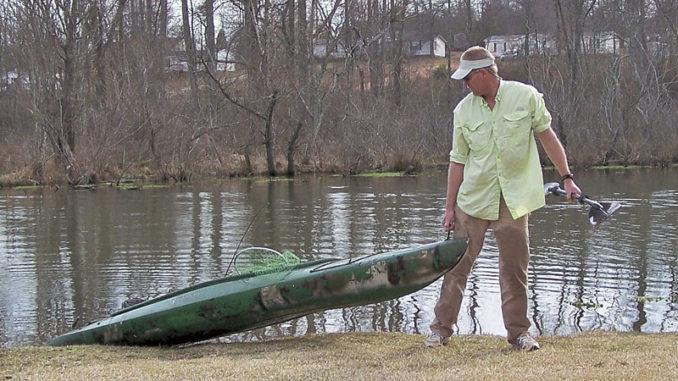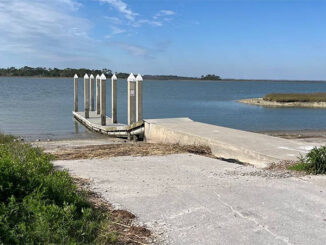
Kayaks are the perfect craft for smaller public lakes
When most sportsmen think about public land, the thought that comes to mind most often is, well, land as well as hunting. The all-too-often neglected counterpart to public land is water. Public land waters come in the form of ponds, small reservoirs, swamps, and a myriad of flowing waters ranging from tidal creeks to major rivers. And these are perfect for kayak fishing.
Access to these aquatic areas may be as easy as paved parking spaces and boat launches to gravel roads that head off into the woods. Or it may be a vague footpath with little or no marking that leads to some distant water.
Public waters on these lands often get an undeserved bad rap for being over-pressured. In some cases, public land waters do get more fishing pressure than others. However, considering that every major reservoir in the country is technically public water and at one time or another regularly produces excellent fishing, launching your kayak into a lesser known body of public water doesn’t seem like a bad idea.
Don’t forget parks and forests
Both Carolinas have a myriad of state parks that are located in nearly every corner of both states. In many cases, state parks utilize larger bodies of water for their recreational purposes. In other cases, they may offer access to more remote bodies of water available only through state park-owned lands.
These waters are often managed more stringently than others. Special creel and size limits are often instituted. This reduces harvest and keeps fish stocks high. The types of bait and number of rods allowed to be used may also be restricted.
National or state forest service lands are also options. Access to these waters may be more remote than state park lands.
To locate some of these bodies of water, the best place to start is a state or NFS map of the managed land. Little may be published about the type or quality of fishing. So in some cases, you’ll need to vet these waters by trial and error.
You may find it useful to call or visit the local forest ranger’s office to inquire about possible restrictions to these areas and ask about access to the water.
Vehicles may only be allowed in designated areas on state or National Forest Service lands. So if you intend to launch a kayak into one of these areas, a non-motorized cart or trailer may save a lot of strain getting to the water.
Water district lakes
Another great source of kayak fishing action that sometimes gets overlooked includes water district lakes. These are smaller bodies of water used to store raw water before it is treated and supplied to surrounding areas for consumption.
Water district lakes and kayaks go hand-in-hand as the water districts or other entities that own the lakes love to promote the green way of life. Especially if the water is being used for public consumption. The other beautiful thing about these lakes is that if power boats are allowed on the water, it’s typically with a horsepower restriction.
Most water district lakes host pretty decent fishing for a number of species. Some lakes may even further restrict creel limits beyond what is allowed by the NCWRC or the SCDNR. That’s a win-win for catch-and release anglers.
Water district lakes range widely in size. Some hold a couple of hundred acres. Others offer a couple of thousand acres. Most in the Carolinas settle between the 400- and 900-acre range. These lakes tend to be immune from seasonal turnover or winter drawdown. These phenomenon frequently plague larger impoundments this time of year.





Be the first to comment